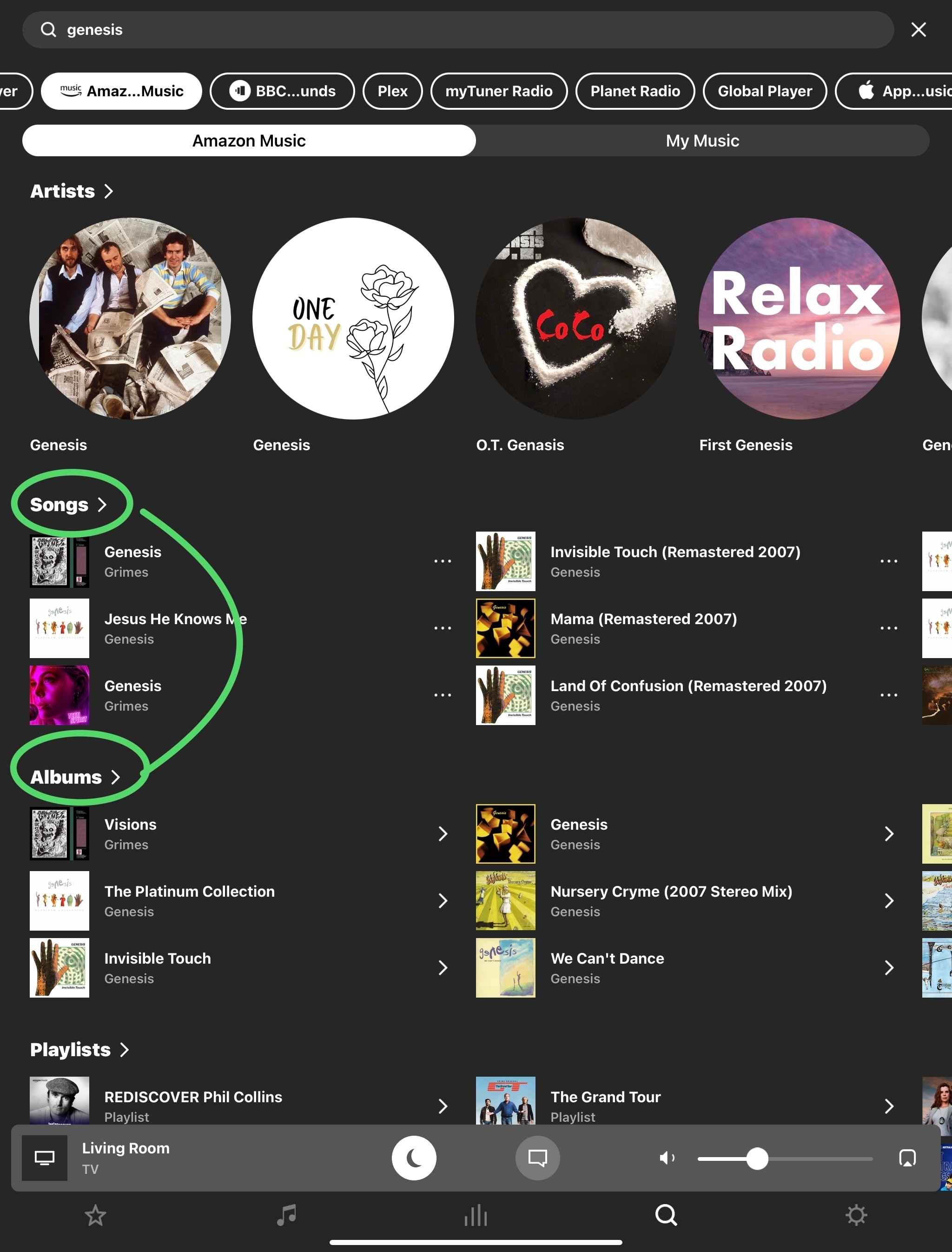When I search for an artist in the Sonos controller app, and click through to view their catalog, it should be possible to order by release date. Also, I would like to be able to distinguish albums from singles or EPs.
Especially if an artist has a large catalog, the app does not provide enough information to navigate it.


